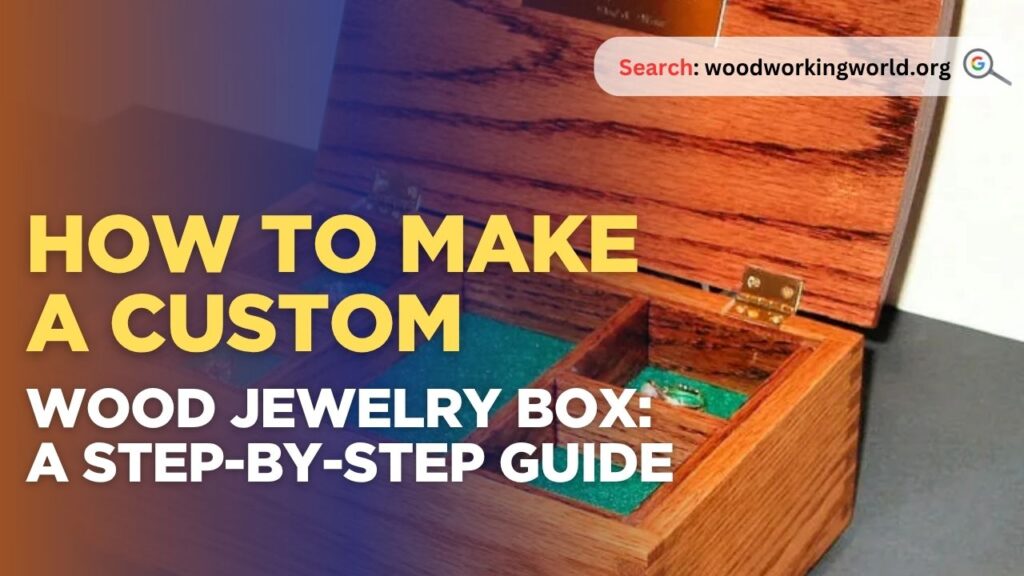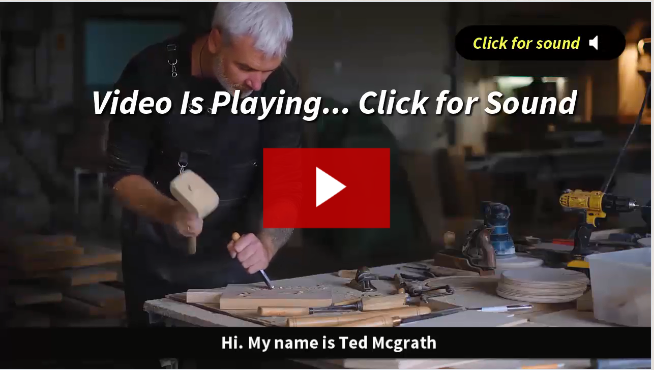How to Make a Custom Wood Jewelry Box: A Step-by-Step Guide
Struggling to find a woodworking project that’s both meaningful and beginner-friendly? A custom wood jewelry box is one of the most rewarding builds you can create—perfect as a gift, a keepsake, or even a product to sell. But how do you craft a box that looks polished, functions smoothly, and reflects true craftsmanship without overcomplicating the process?
In this step-by-step guide to making a custom wood jewelry box, we’ll walk you through the tools you need, the materials to choose, essential measurements, assembly techniques, finishing tips, and most importantly—how to create a beautiful, durable box that feels handcrafted and professional.

👉 CLICK HERE to Unlock 16,000+ DIY woodworking plans now
How to Make a Custom Wood Jewelry Box
Materials and Tools Needed to Make a Custom Wood Jewelry Box
Materials:
- Quality hardwood (such as cherry, walnut, or oak)
- Plywood for the bottom and dividers
- Sandpaper (various grits)
- Wood glue
- Small hinges
- Clasp or lock (optional)
- Finish (oil, lacquer, or varnish)
- Felt or velvet for lining (optional)
Tools:
- Table saw or circular saw
- Router or chisel
- Miter saw
- Clamps
- Measuring tape
- Pencil
- Screwdriver
- Brush for applying finish
👉 CLICK HERE to Unlock 16,000+ DIY woodworking plans now
Step 1: Plan and Design
Before you start cutting any wood, it’s important to have a clear plan. Determine the size and shape of your jewelry box. Sketch your design, including dimensions and any compartments or features you want to include. This plan will serve as your blueprint throughout the project.
Step 2: Select and Prepare the Wood
Choose high-quality hardwood for your jewelry box. The wood should be straight and free of knots or defects. Prepare the wood by cutting it to size based on your design. Typically, you’ll need four pieces for the sides, one for the top, and one for the bottom.
- Cutting the Sides: Use a table saw or circular saw to cut the wood to the desired dimensions for the sides of the box. Make sure all the pieces are of equal height and length for a symmetrical box.
- Cutting the Top and Bottom: Cut the top and bottom pieces slightly larger than the dimensions of the assembled sides. This allows for sanding and adjustments later.
Step 3: Join the Sides
Join the sides of the box using either dovetail joints, box joints, or simple butt joints reinforced with dowels or screws. Dovetail and box joints provide a strong and aesthetically pleasing connection but may require more skill and tools.
- Dovetail Joints: These interlocking joints are strong and decorative. Use a dovetail jig and router to cut the joints. Ensure a snug fit by testing the joints before applying glue.
- Box Joints: These are simpler than dovetails but still strong. Cut a series of evenly spaced notches using a box joint jig on your table saw.
- Butt Joints: These are the simplest joints, where the ends of the boards are glued and clamped together. Reinforce with dowels or screws for added strength.
Apply wood glue to the joints and clamp the sides together. Make sure the box is square and allow the glue to dry completely.
Step 4: Fit the Bottom
Once the sides are assembled and the glue is dry, it’s time to fit the bottom of the box.
- Measure and Cut: Measure the inside dimensions of the box and cut a piece of plywood to fit.
- Attach the Bottom: Apply wood glue around the bottom edges of the box and insert the plywood piece. Clamp and let it dry. For additional strength, you can use small finishing nails or screws to secure the bottom.
🛠️ Ted’s 16,000 Woodworking Plans – Why You’ll Love It


Step 5: Create the Lid
The lid of the jewelry box can be a simple flat piece or a more decorative raised panel.
- Flat Lid: Cut a piece of hardwood to the dimensions of the box top. Sand the edges smooth.
- Raised Panel Lid: For a more decorative look, create a raised panel using a router. This involves cutting a profile around the edge of the lid to give it a three-dimensional appearance.
Step 6: Install Hinges and Clasp
Choose small, durable hinges that complement the style of your jewelry box.
- Mark and Attach Hinges: Position the hinges on the back of the box and mark the screw holes. Pre-drill the holes and attach the hinges with screws.
- Install Clasp or Lock: If you want to add a clasp or lock, position it on the front of the box and mark the screw holes. Pre-drill and attach it with screws.
Step 7: Sanding and Finishing
Sanding is a crucial step for a smooth and professional-looking finish.
- Start with Coarse Grit: Begin with a coarse grit sandpaper (80-100) to remove any rough spots or tool marks.
- Progress to Finer Grits: Gradually move to finer grits (120, 220, 320) for a smooth finish. Sand all surfaces, including the inside and edges.
- Apply Finish: Choose a finish that enhances the beauty of the wood. Oil finishes penetrate the wood and bring out its natural color. Lacquer and varnish provide a protective topcoat. Apply the finish with a brush or cloth, following the manufacturer’s instructions. Allow each coat to dry thoroughly before applying the next.
Step 8: Line the Interior (Optional)
For a luxurious touch, line the interior of your jewelry box with felt or velvet.
- Measure and Cut Fabric: Measure the interior dimensions of the box and cut the fabric to fit.
- Attach Fabric: Use a spray adhesive or fabric glue to attach the fabric to the bottom and sides of the box. Smooth out any wrinkles or bubbles.
Step 9: Add Dividers (Optional)
Dividers help organize your jewelry and prevent pieces from tangling.
- Design the Layout: Plan the layout of the dividers based on the types of jewelry you’ll store.
- Cut and Fit Dividers: Cut pieces of thin plywood or hardwood to create the dividers. Fit them into the box, securing with wood glue or small brads.
Step 10: Final Touches
Inspect your jewelry box for any rough spots or imperfections. Give it a final sanding if necessary. Wipe down the box to remove any dust, and apply a final coat of finish if desired.
👉 CLICK HERE to Unlock 16,000+ DIY woodworking plans now
Conclusion: How to Make a Custom Wood Jewelry Box
Creating a custom wood jewelry box is a rewarding project that results in a beautiful and functional piece. By following these steps and paying attention to detail, you can craft a jewelry box that reflects your personal style and craftsmanship. Enjoy the process and the satisfaction of creating something unique and special with your own hands.
I hope this article on How to Make a Custom Wood Jewelry Box has been helpful. If you have any further questions, please feel free to leave a comment below.
👉 CLICK HERE to Unlock 16,000+ DIY woodworking plans now
